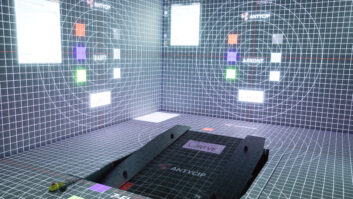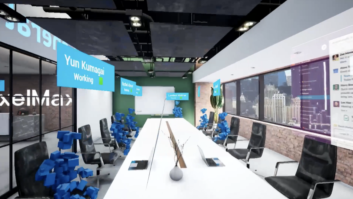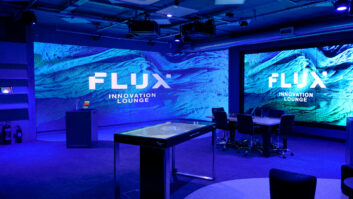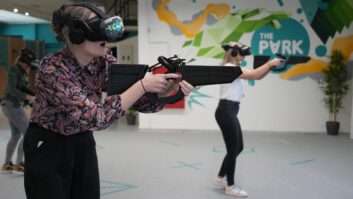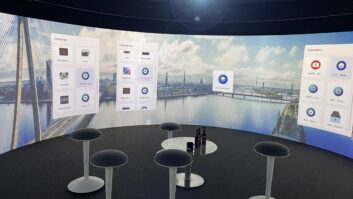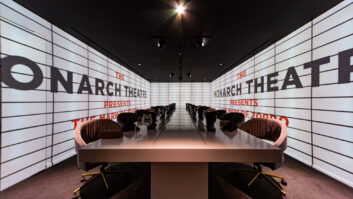 For years, people had talked about what the future of the workplace might look like. Flexible hours, remote working, virtual meetings. And then, all of us who could, found ourselves working from home overnight.
For years, people had talked about what the future of the workplace might look like. Flexible hours, remote working, virtual meetings. And then, all of us who could, found ourselves working from home overnight.
The pandemic put a stop to business as usual. It’s unlikely we’ll be returning to what the world used to look like. So how will the post-Covid future look?
We’ve seen people getting to grips with working from home, remote learning, and virtual events. As hard as the pandemic’s been, it’s also brought forth innovation. And, for most organisations, the challenge has been how to engage and collaborate with remotely-located collaborators.
Neil Foster, CEO at venture capital firm The Ingenious Group puts it well: “In the current environment, it is the companies that effectively support collaboration and communication between multi-locational teams that will thrive.” And it was this conviction that gave Ingenious the gumption to take a $1m bet on Igloo technology during a lockdown.
The fact is, despite its challenges, this crisis has given us a great opportunity to rethink the way that offices work, universities teach, and venues engage with audiences. Throughout 2020, we helped many companies create their spaces of the future. Now we’re reflecting on what we learnt and how to refine it further.
Working from home
Remote working has meant countless companies have been able to remain productive during the heights of the pandemic. Great! Let’s scrap offices entirely, some might say. And stateside, Global Workplace Analytics estimates 25-30% of the workforce will be working remotely multiple days when the pandemic eventually subsides. Pre-Covid, it was 4%.
But, working from home indefinitely has drawbacks. Most of our idea generation and problem solving doesn’t come from the scheduled 1030 video call. It comes from informal conversations and posing questions around the office.
Even before the pandemic, collaboration tools like Teams, Asana, Basecamp, HipChat, Wrike, and Slack were gaining fast in popularity. There’s a real need to bind teams together, corral documents and data, and provide a shared environment for people to collaborate.
So, let’s make offices and meeting rooms work better for us. And immersive technology can be key, as it’s an ideal way of connecting employees across offices and those working from home.
And VR tools aren’t only used for meetings. They can integrate with collaboration solutions to let colleagues interact while working together on a project. Immersive workspaces can create hybrid physical-digital spaces for remote collaboration and ‘Zoom Rooms’.
Remote learning
Remote learning has proven essential to universities, schools and companies providing training. But lecturers have to present to a computer and can’t easily see their students. So much of communication requires body language. For students, it can be a struggle to remain engaged.
Again, immersive technology can play its part. Video conferencing software can display a montage of life-sized faces in front of a lecturer. The walls behind them can display presentation slides or teaching aids.
These have already been tried-and-tested by the world’s most prestigious universities. Harvard Business School makes use of HBX Live, a live web-based classroom based in a television studio. The University of Oxford’s Saïd Business School features the Oxford HIVE, a similar custom-built facility. The opportunity for the AV industry is to take affordable equivalents to many more universities.
Virtual events
We won’t return to crowded venues packed with attendees from across the globe soon. Virtual events are here to stay. However, it’s too easy to feel you’re watching videos on your computer, rather than feeling like you’re part of an event.
You have to engage with participants. Give them a space to interact with the hosts and other attendees, and it’ll feel like their space. Some interesting formats using VR and immersive technologies have emerged. And there will continue to be a role for them in the future – especially to extend the audience size of in-person events.
Open immersive spaces offer a solution. The presenter and onsite visitors can see remote participants in life-sized feeds and share any content from any source.
Remote participants get a real sense of presence. They can see and interact with the host, onsite attendees and other remote participants. They can have a ringside view of the data and documents that are shared and can refer back to a recording of the whole session.
Igloo Vision is the shared immersive space company. Igloo designs, develops and delivers immersive technology and software that takes any digital content and puts it into a shared immersive space, a bit like stepping inside a giant VR headset.
In its ten-year history, Igloo has worked on several hundred assignments for many of the world’s biggest brands. Headquartered in rural Shropshire, it also has offices in London, New York, Los Angeles, Melbourne, and Toronto.
